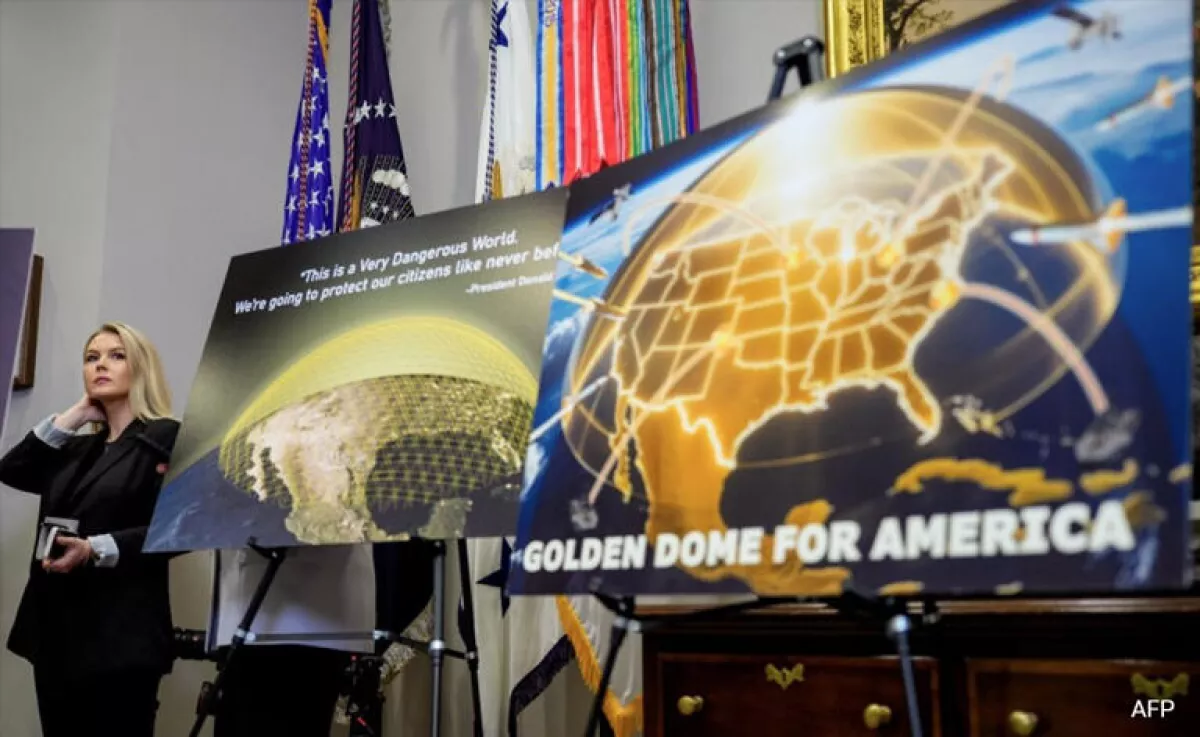Golden Dome’s global geopolitical fallout Trump’s ambitions to spark new arms race between US, Russia
Just one week after US President Donald Trump’s January inauguration, he signed an executive order calling for the development of a new missile defence system dubbed “Iron Dome for America,” inspired by Israel’s renowned missiles defence shield. By March 4, while addressing a joint session of Congress, Trump formally requested funding for a “state-of-the-art Golden Dome missile defence shield to protect our homeland, all made in the USA.”
Experts have assessed this decision as marking a significant departure from previous US missile defence justifications, which emphasized deterrence only against limited threats from North Korea and Iran while the new shield's target scope has now widened to include also “peer” and “near-peer” rivals—namely Russia and China—signalling a major policy shift.
General B. Chance Saltzman, Chief of Space Operations for the US Space Force, has been cited in an article by The Moscow Times as describing the Golden Dome, which is the new name given to the project referring to the American edition of the defence shield, as a “system of systems,” designed to integrate existing missile defence infrastructure with new space-based technologies. The ultimate goal, according to the executive order, is to create a layered shield capable of defending against ballistic, hypersonic, advanced cruise missiles, and next-generation aerial threats from both conventional and emerging adversaries. This enhanced missile shield aims to significantly surpass current US capabilities.
Golden Dome’s architecture is expected to revolve around space-based assets, including a network of detection satellites that can identify missile launches and their launch sites across land, sea, and air. These would be supported by a separate constellation of attack satellites that could intercept missiles during their boost phase using kinetic interceptors or non-kinetic technologies like lasers. Although the main focus is on homeland protection, the executive order hints that Golden Dome could extend to theater missile defence, thereby safeguarding US troops stationed overseas and protecting allies in Europe and Asia. The article points out that this global dimension adds a new strategic layer to the program.

Speed is central to the plan. As General Saltzman said, “If this were a traditional Pentagon development program, it could take 12 to 17 years,” but Trump’s team aims for substantial progress by the end of his term in January 2029. To meet this ambitious timeline, the project will rely not only on major defence contractors like Lockheed Martin but also on emerging firms such as SpaceX, Anduril, and Palantir.
Practical and political drivers
There are technical justifications for upgrading the US missile defence system. The current setup, with 40 ground-based interceptors in Alaska and four more in California, was never designed to counter large-scale attacks from powers like Russia or China. Furthermore, it offers limited defence against modern hypersonic missiles. Golden Dome seeks to address these vulnerabilities.
Yet the political motivations are just as important. According to the article, Trump views the program as a high-profile demonstration of his “peace through strength” doctrine. Its resemblance to President Ronald Reagan’s Strategic Defence Initiative (SDI)—a Republican president that Trump has repeatedly expressed his respect and admiration for—further underscores its symbolic value. Like SDI, the author believes that Golden Dome aspires to revolutionize missile defence, albeit under vastly different technological and geopolitical circumstances.
Implications for Russia
Unsurprisingly, the Kremlin sees Golden Dome through a far more adversarial lens. Russia has long viewed US missile defence systems as destabilizing. Since the US withdrew from the Anti-Ballistic Missile Treaty in 2002, which was signed back in 1972 between Washington and the Soviet administration, Russian officials have warned that such programs could give Washington first-strike capability by shielding it from retaliation. The fear is that with Golden Dome in place, the US might act more aggressively abroad, feeling invulnerable behind its defences.
The article cites Russian experts that claim their current strategic arsenal could still overwhelm any US missile defence system using decoys, jammers, or saturation attacks—flooding defences with more missiles than they can intercept, a tactic seen in Hamas’s notorious October 7, 2023 assault on Israel. But in nuclear strategy, assumptions are dangerous. Because national survival is at stake, the author warns that Russia must assume Golden Dome could work and prepare accordingly.
In response, Moscow is expected to accelerate its nuclear modernization program. This involves replacing aging Soviet-era delivery systems with advanced Russian models and investing heavily in so-called “super weapons” that can bypass any conceivable defence shield. These include the Burevestnik, a nuclear-powered cruise missile with near-unlimited range that was famously unveiled by President Putin in 2018 together with a range of other new "super weapons", such as the Poseidon, a nuclear-powered underwater drone designed to strike coastal targets—especially relevant since Golden Dome is focused on aerial threats.

The article suggests that another likely Russian countermeasure will be the development of nuclear anti-satellite weapons capable of knocking out US satellite constellations crucial to Golden Dome’s function. Though such a strike would wreak havoc on global space infrastructure, the Kremlin might see it as a necessary evil if it would mean not losing a nuclear war.
Golden Dome is thus expected to fuel a new arms race, pressuring Russia to divert scarce resources to military buildup at a time when its defence budget is already under immense strain due to the ongoing war in Ukraine. As the Kremlin pours money into strategic forces, the publication warns that Russia’s conventional military, civilian sectors and the economy overall are likely to suffer long-term damage. Even if Golden Dome never fully meets its ambitious goals, its mere pursuit could alter the global strategic balance. It pushes adversaries to rethink deterrence and rearm, ushering in an era of heightened militarization and reduced stability—especially between the world’s major nuclear powers.
By Nazrin Sadigova








